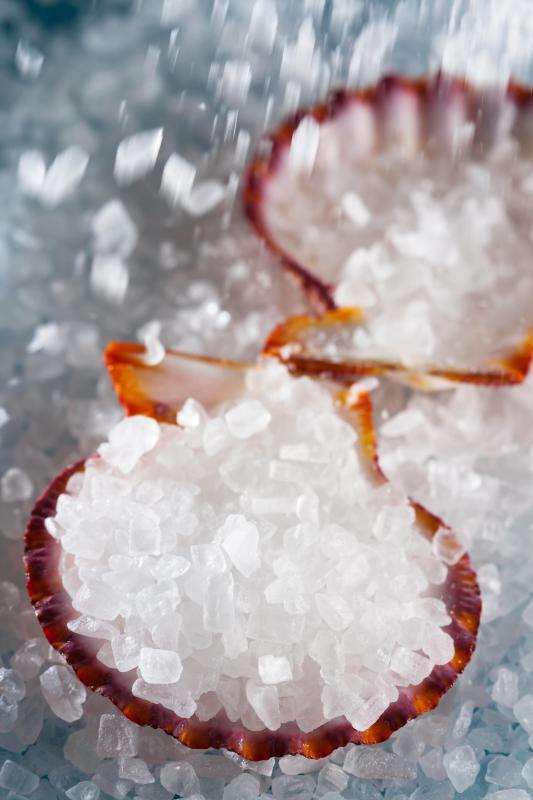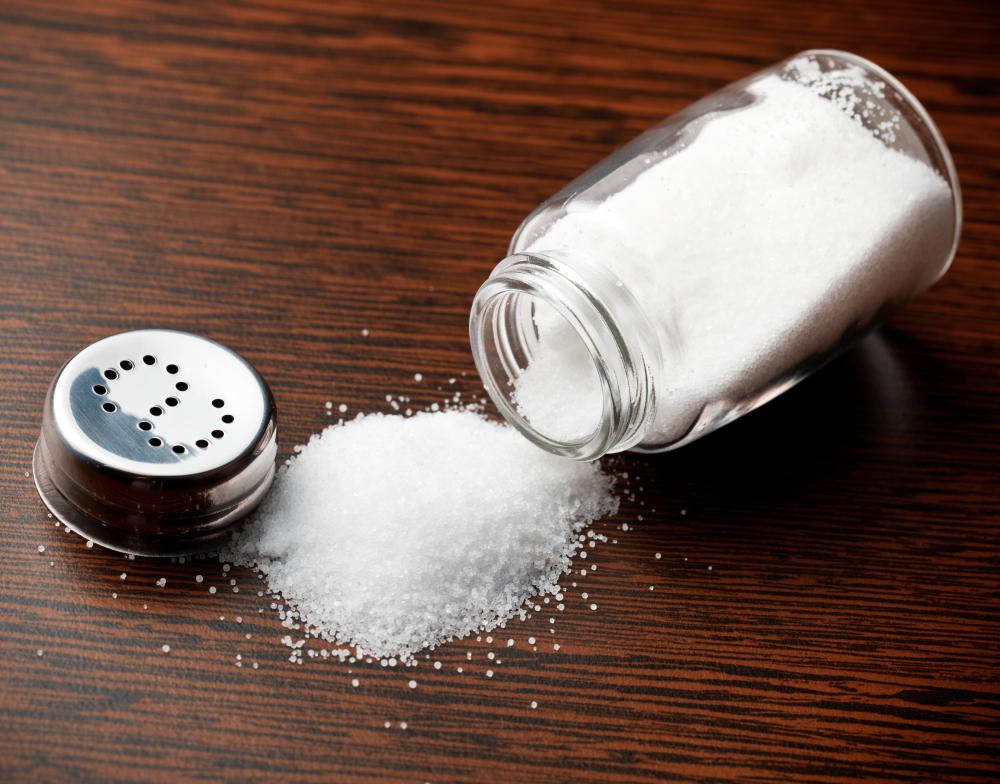What is a Salt Dome?
 Mary McMahon
Mary McMahon
A salt dome is a geologic formation caused by a phenomenon known as diapirism, in which lighter materials force their way up through denser ones. Salts and other evaporated minerals are generally lighter than the sedimentary rock which surrounds them, and as a result, salt has a tendency to well up, creating a visible bulge in the surface of the earth which is often capped with a layer of rock. Salt domes have been utilized by humans for centuries as readily available supplies of salt, since they typically contain a high concentration of halite, otherwise known as table salt.
The formation of a salt dome takes centuries. It starts with the formation of an isolated marine inlet, which slowly evaporates, concentrating the salts. Geologists believe that these inlets must be flooded and evaporated several times to reach the concentration of salt needed to create a salt dome. Once a large deposit of salts is created, sediments are deposited over the salt as the centuries progress, but the salt will continue drifting to the top, because it is less dense than the sediments around it. As a result, the salt creates a distinctive bulge, and it appears to be boring its way through the surrounding rock when viewed in cross-section.

Salt domes can be found all over the world, in a wide variety of settings. Some are in isolated desert environments, testifying to the fact that these regions were once covered in water, while others are in marshes and swamps near the ocean. Historically, salt domes have been mined for their cargo of salt, and they also have other economic uses which can make ownership or control of a salt dome extremely profitable.

Many salt domes contain pockets of oil and natural gas, which become trapped as the salt rises. These deposits have nowhere to go until they are drilled, and they can be quite significant. Salt is also an extremely stable storage medium, leading some companies to use salt domes to store deposits of fuel and natural gas; it has been suggested that nuclear waste could potentially be stored in salt domes as well, since salt is inert and very stable.
An incomplete salt dome is known as a salt pillow, and salt domes can turn into salt glaciers, huge deposits of salt which actually move across the surface of the Earth, typically when the ground and the salt are lubricated by rain.
AS FEATURED ON:
AS FEATURED ON:














Discussion Comments
I thought we got all our salt from reserves under the sea. I didn't know that any were available on land! That's much more convenient for harvesting.
@healthy4life – Yes, they do remove the salt. I read about salt dome storage awhile back, and it does sound like a good idea for gas companies.
They have to inject some water inside the salt dome. This makes the salt dissolve, and they can squirt it out into the middle of the ocean.
I read that storage down there is a lot cheaper than on land. Also, you don't have to worry about anyone trying to steal it! I doubt anyone would have the tools to rob a salt dome of oil or gas!
If you are using a salt dome for gas storage, doesn't the salt first have to be removed? It just seems to me that it would take up too much space.
I heard about a salt dome in geology class. There are some under the ocean that have coral beds on top. The ones I heard about are in some sort of national sanctuary, so I believe they are protected.
Post your comments